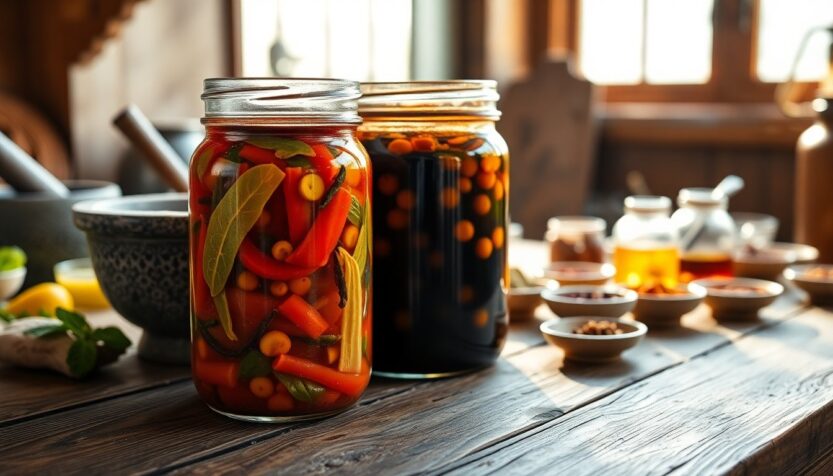The art of fermentation: unlocking flavors through time
The palate never lies… it reveals stories of ancient practices and vibrant flavors that tantalize the taste buds. Consider the tang of perfectly fermented kimchi, where each crunchy bite unfolds a complex history of ingredients and techniques. Then, there are the rich, umami notes found in well-aged soy sauce, a product of meticulous fermentation that elevates simple beans into a gourmet experience. This exploration invites us to appreciate the transformative power of fermentation, a culinary art that deeply connects us to our roots.
The story of fermentation
Behind every jar of sauerkraut and every bottle of kombucha lies a narrative that intertwines cultures and traditions. Fermentation is not merely a technique; it is an ancient process that has preserved food and enhanced flavors for centuries. From the wild yeast of sourdough to the probiotics in yogurt, fermentation harnesses the power of microorganisms to create something extraordinary. As a former chef, I have learned that behind every dish there’s a story—and in the case of fermentation, it often involves a tale of patience and transformation.
Understanding the technique of fermentation
The palate never lies: fermentation transforms sugars into acids, gases, or alcohol through the action of microorganisms. This natural process not only extends the shelf life of food but also enriches its flavor profile. For example, when making kimchi, a blend of vegetables, salt, and spices creates an environment that fosters beneficial bacteria. As these microorganisms consume the sugars in the vegetables, they produce lactic acid, preserving the kimchi and imparting that distinctive tangy flavor.
Connection to territory and tradition
Fermentation embodies a rich tapestry of local traditions, closely tied to the concept of filiera corta, or short supply chains, which prioritizes sourcing ingredients from nearby producers. In the Mediterranean, fermentation has evolved as a method to maximize seasonal produce, while in various Asian cultures, it remains a fundamental aspect of culinary heritage. The terroir—the distinctive characteristics of a region—significantly influences the flavors of fermented products, offering a genuine reflection of their origins.
Invitation to the culinary experience
Delve into the fascinating world of fermentation and consider experimenting in your kitchen. Why not try making homemade pickles or fermenting your own yogurt? Each batch not only serves as a lesson in technique but also offers a connection to culinary traditions and a commitment to sustainability. The journey of flavor is as significant as the destination. Embrace this process, and allow your palate to lead you toward new culinary adventures.

